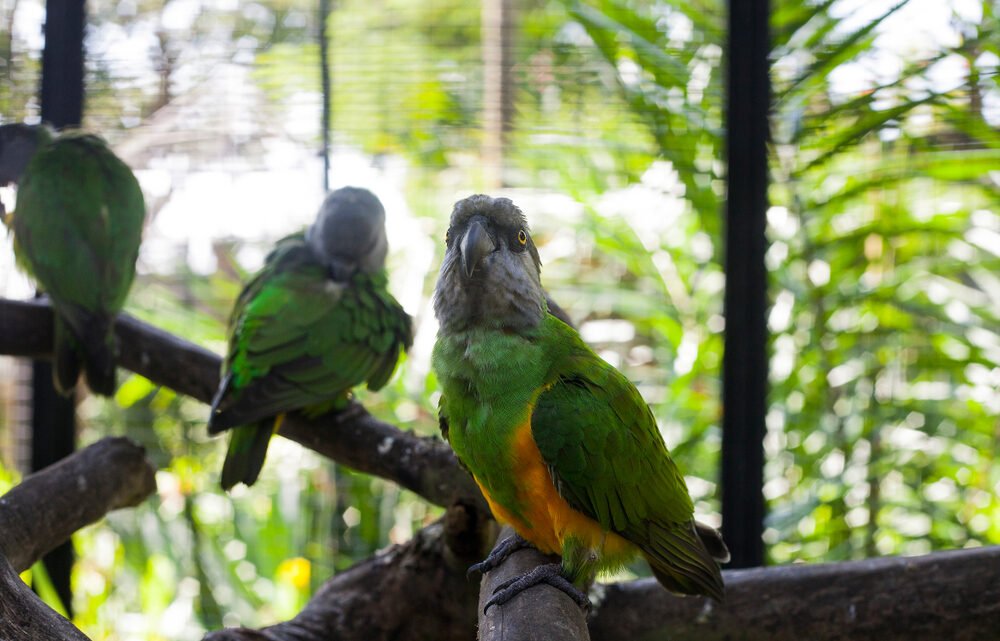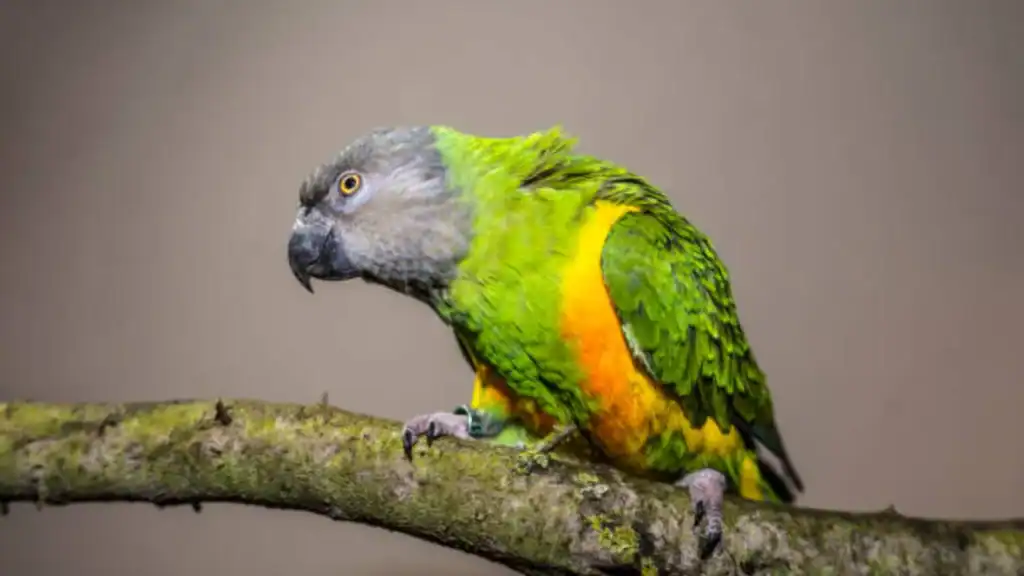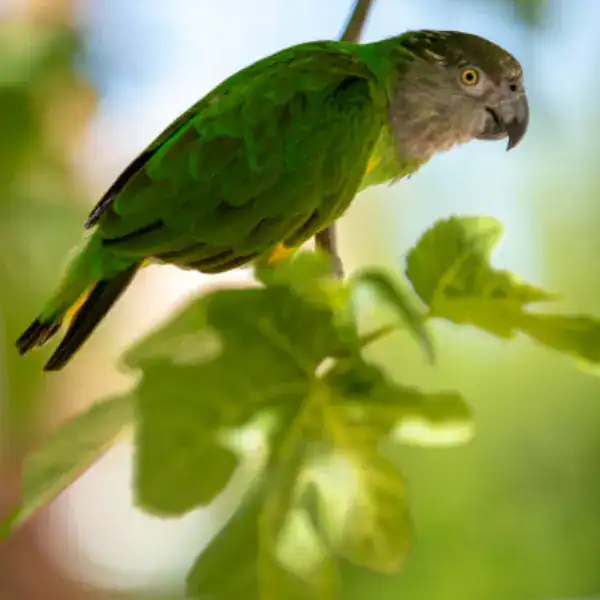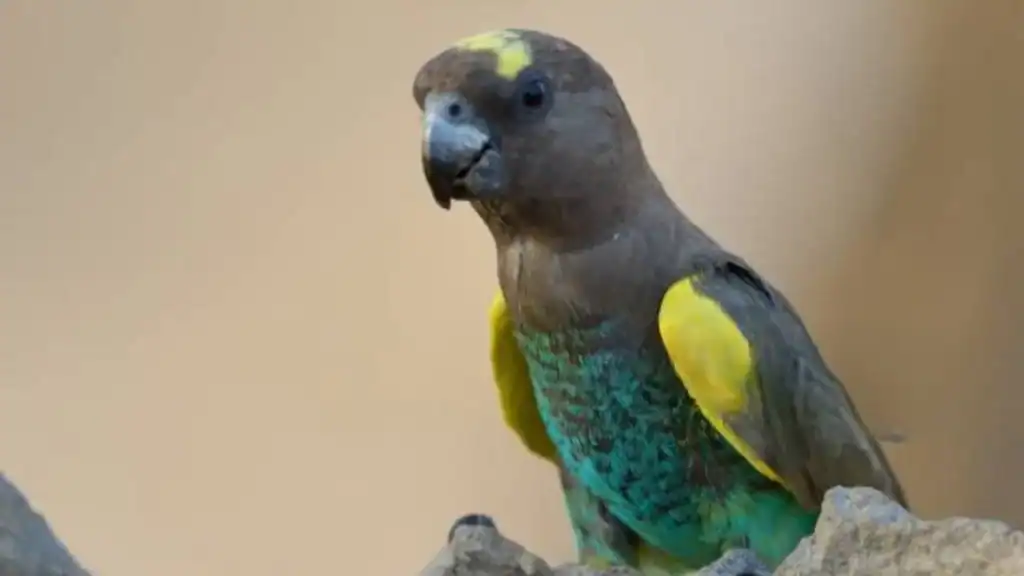
Do Senegal Parrots Talk? | How to Teach a Senegal Parrot to Talk
Can Senegal Parrots Mimic Human Speech?
If you’re thinking about getting a Senegal parrot, one of the first things you might wonder is: Can they talk? Well, the answer is yes, but with some interesting nuances. Senegal parrots can mimic human speech, though not as fluently or as extensively as other species like the African Grey.
What makes them stand out in the parrot world is their charming vocalizations and how they engage with their owners. While their speech isn’t as complex, they have a natural ability to replicate sounds they hear around them—especially those they’re exposed to daily. This includes not just words but also whistles, doorbells, and even the sound of your voice.
Unlike parrots that can repeat long sentences, Senegal parrots tend to learn a few phrases and use them to interact. It’s their unique way of communicating, making them both fascinating and endearing companions. So, while they may not put together entire conversations, their ability to mimic is still a remarkable trait that sets them apart from other birds.
How Do Senegal Parrots Communicate Naturally?
In the wild, Senegal parrots are pretty vocal, but their communication style is a bit different from what you might expect from a talking parrot. They don’t have conversations like humans do, but they still have a lot to say. Their primary communication method is through a variety of sounds—each with its own meaning.
- Chatter and calls: These parrots use soft chirps and whistles to communicate with each other. These sounds help them stay in touch with their flock and signal danger or food sources.
- Body language: Like many birds, Senegal parrots rely on body language—flapping wings, head movements, and tail positions—to express emotions or intentions.
- Mimicry of environmental sounds: While they are great mimics, they also copy the natural sounds around them—things like the rustling of leaves or the distant calls of other animals. In a home environment, this means they might start mimicking the sound of your phone ringing or the microwave beeping.
In the wild, this natural communication is essential for their survival and social interaction. They use sounds to stay connected with their flock, warn of predators, or simply express their mood.

Can Senegal Parrots Mimic Human Speech?
Senegal parrots can mimic human speech, but their skills aren’t as advanced as other species like African Greys or Amazons. While they are excellent at mimicking the sounds they hear in their environment, their ability to reproduce complex words or sentences is limited.
Mimicry Compared to Other Parrot Species
When it comes to mimicking human speech, Senegal parrots fall somewhere in between good mimics and master mimics. According to studies and expert advice from avian behaviorists, Senegal parrots can pick up a small number of words or phrases, especially those that are repeated regularly. However, they don’t have the same level of vocal clarity or extensive vocabulary as some other parrot species.
- African Greys, for example, can replicate entire sentences and understand some context behind what they say.
- Senegal parrots, on the other hand, will typically focus on a few simple words or sounds they hear in their environment.
What makes them unique is that, like Cockatoos, Senegal parrots will sometimes mimic not just human speech but also environmental noises—from ringing phones to microwave beeps or even your voice tone.
Vocalization vs. Human Speech Mimicry
Now, it’s important to understand that vocalization and human speech mimicry are not the same thing.
- Vocalization is more about natural sounds. Senegal parrots, in the wild, use vocalizations like whistles, squawks, or soft calls to communicate with their flock. These sounds serve to signal danger, food sources, or to stay connected with others in the group.
- Human speech mimicry involves parrots repeating specific words or phrases they hear from humans. But here’s the catch: while Senegal parrots can mimic speech, they don’t fully comprehend it. They are more like sound recorders—they can repeat the sound but have no understanding of its meaning. This is quite different from African Greys, which can not only mimic words but also associate some meaning with them.
Best Methods for Teaching a Senegal Parrot to Talk
Teaching your Senegal parrot to talk isn’t an instant process, but with the right techniques and consistency, it’s absolutely achievable. Here’s how to approach it, based on insights from top avian trainers and experts in the field:

1. Repetition & Consistency
One of the most effective ways to teach your Senegal parrot words is through consistent repetition. According to avian behaviorists, parrots learn best when they hear specific words or phrases frequently and at regular intervals.
- Say the same word or phrase multiple times a day, ideally in a context that makes sense to the bird. For instance, saying “hello” every time you enter the room will help them associate the sound with your presence.
- Don’t skip days. Consistency is key to building a strong connection between the sound and the behavior.
Source Insight: According to The Parrot Wizard, a top resource in bird training, a consistent training schedule helps reinforce the learning process by embedding those sounds into the parrot’s daily routine.
2. Tone of Voice & Engagement
Senegal parrots respond strongly to emotion and tone. It’s not just the word itself, but how it’s delivered.
- Use an enthusiastic tone. Research from the Animal Behavior Society suggests that parrots are more likely to mimic words that are spoken in a positive, engaging, or emotionally rich tone. The parrot associates the sound with a good feeling, motivating them to repeat it.
- Vary your tone and pitch. Parrots, including Senegal parrots, respond to changes in pitch and rhythm, which can increase their likelihood of mimicking sounds.
3. Positive Reinforcement
The most successful training programs for parrots rely on positive reinforcement. It’s essential to reward your parrot whenever they make an attempt to vocalize. Whether they say the word correctly or even make a sound that resembles it, praise and treats will encourage them to keep trying.
- Immediate rewards help them connect the behavior (vocalization) with the positive outcome (treat or attention).
- According to Dr. Irene Pepperberg, a renowned expert in animal cognition, using small, consistent rewards builds the parrot’s confidence and reinforces the behavior, making them more likely to repeat it.
4. Minimize Distractions for Focused Learning
For the best results, try to limit distractions when training. Creating a quiet, calm environment allows your Senegal parrot to focus on the sounds you’re teaching them.
- Turn off background noise—like the TV or loud music—during training sessions.
- Short and focused training sessions of 5-10 minutes work best. Overloading them with information in one session can cause them to lose focus and hinder their learning.
5. Patience is Key

Training a Senegal parrot takes time and patience. It’s crucial to remain consistent without expecting immediate results. Some parrots learn in weeks, while others may take months.
- Avoid frustration. Birds can sense your energy and stress. A calm, patient approach will yield better results in the long run.
- Celebrate small victories. Even a slight attempt at mimicking a word is a step in the right direction. Reaffirm their efforts with rewards, and they’ll be more eager to continue.
Source Insight: According to expert trainers at BirdTricks.com, one of the leading platforms in avian behavior, the training process should focus on trust and building a positive association with the experience rather than strict “obedience.
Read here:
8 Best Small Pet Birds for Beginners that Talk (with pictures)
Common Challenges and How to Overcome Them
Training a Senegal parrot to talk can be tricky, but understanding the common challenges and how to navigate them makes all the difference. Here are a few obstacles and tips on overcoming them:
1. Lack of Interest or Motivation
Sometimes, your parrot just doesn’t seem interested in learning words. They may prefer to focus on other activities or sounds.
- How to fix it: Try engaging your parrot with more enthusiasm. Use high-energy phrases (like “hello!” or “good morning”) in a way that excites them. Positive reinforcement can go a long way—give them treats or extra playtime when they make even the smallest attempt.
2. Inconsistent Training
Senegal parrots thrive on routine. Skipping days or not being consistent can confuse them.
- How to fix it: Establish a daily training routine. Pick a time of day that works for both you and your parrot and stick to it. Consistency is key for language learning.
3. Overwhelming Training Sessions
Training sessions that are too long can overwhelm your parrot, leading to frustration.
- How to fix it: Keep sessions short and sweet—5 to 10 minutes at a time. Multiple short sessions spread throughout the day work better than one long one.
4. Not Using the Right Words
Some words might be too difficult for your Senegal parrot to reproduce. If you start with complex phrases, they may struggle.
- How to fix it: Start with simple words or sounds, and once they’ve mastered those, move on to more complex phrases. Stick to words that have clear, repetitive sounds.
How to Motivate Your Senegal Parrot to Talk

Getting your Senegal parrot to talk isn’t just about teaching them words—it’s about stimulating and motivating them in a way that makes learning fun.
1. Exposure to Other Talking Birds
Parrots, including Senegal parrots, often get inspired by hearing other birds talk. If you have a talking bird (like an African Grey or Amazon), your Senegal parrot might mimic their sounds, or at least get motivated by the vocalization.
- How to use this: Let your parrot listen to the sounds of other talking birds. If you don’t have another bird, consider playing audio recordings of birds speaking. This can spark their interest and encourage vocal mimicry.
2. Use Social Interaction as Motivation
Senegal parrots are social animals, so talking is often a way for them to interact with you. Engage with them during your training sessions. Talk to them regularly, whether you’re saying words or simply having casual conversations.
- How to use this: Make them feel like part of your daily life. Talk to your parrot when you come home, ask them how their day was, or just chatter about random things. The more interaction, the more motivated they’ll be to respond.
3. Create a Fun, Reward-Based Learning Environment
Training doesn’t have to be a chore. Keep things light and fun! If they say a word or try to mimic something, reward them immediately with a treat or extra playtime.
How to use this: Positive reinforcement works wonders. When they attempt a sound, even if it’s imperfect, praise them. Over time, they’ll associate speaking with something enjoyable.
Conclusion: Key Takeaways for Training Your Senegal Parrot
Training your Senegal parrot to talk isn’t a quick fix—it takes patience, consistency, and a little creativity. Here are the key things to remember:
- Repetition and Consistency: Keep training sessions short and consistent. Say the same words or phrases regularly, and don’t skip days.
- Tone and Emotion Matter: Senegal parrots respond best to enthusiastic tones. Say words with feeling, and they’re more likely to mimic.
- Positive Reinforcement: Reward any attempt to vocalize. Treats or praise build confidence and make learning fun.
- Be Patient: Expect small steps at first. Some parrots take months, and that’s okay. Don’t get frustrated.
- Motivate with Social Interaction: Talking birds and daily chats with your parrot will keep them engaged.
Realistic Expectations:
Not every Senegal parrot will become a master at mimicking speech. But with the right techniques, your parrot will likely pick up a few words, and that’s a win! Keep it fun and stay engaged, and you’ll see progress.
📚 Sources
- Senegal Parrot Overview – Wikipedia
Provides detailed information on the Senegal parrot’s behavior, habitat, and vocalizations.
👉 https://en.wikipedia.org/wiki/Senegal_parrot - Parrot Talking Training – Parrot Essentials
Discusses effective methods for teaching parrots to talk, emphasizing repetition and positive reinforcement.
👉 https://parrotessentials.co.uk/blog/how-to-teach-a-parrot-to-talk - Parrot Communication and Intelligence – PBS Learning Media
Explores the communication skills and intelligence of parrots, including their ability to mimic human speech.
👉 https://www.pbslearningmedia.org/resource/nat14.sci.lifsci.parcom/parrot-communications-and-intelligence/ - Senegal Parrot Care Guide – Animalia.bio
Offers insights into the care, behavior, and vocalization of Senegal parrots.
👉 https://animalia.bio/senegal-parrot - Senegal Parrot Talking Ability – Raising Parrots
Discusses the talking abilities of


